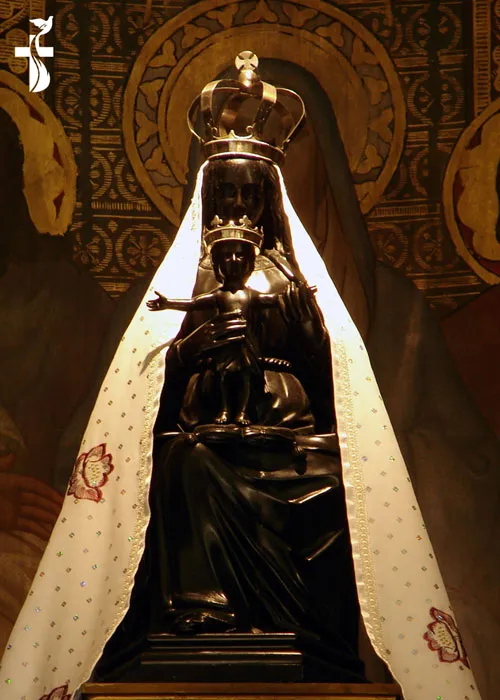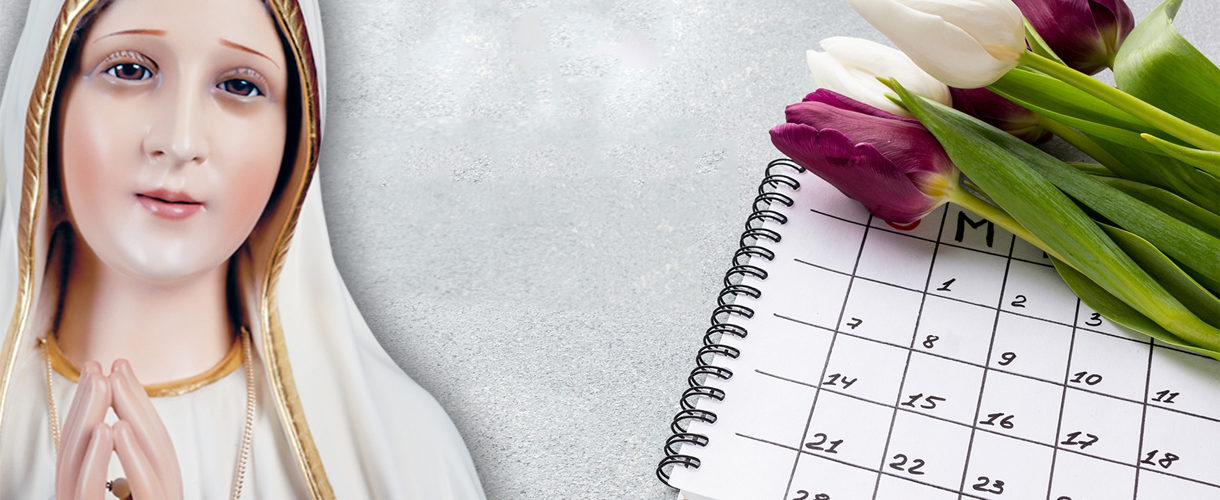
Our Lady Of Joy
Country : France
Year : 1134
From the hills of Laon where the cathedral lifts its towers adorned with stone-carved oxen in homage to the men who labor below—one can see for miles and miles over the immense plain, to the village of Liesse.
In this village of northern France is a shrine dedicated to Our Lady of Joy. Here the village church is naturally everything. The church transports one back to the thirteenth century. Directly in front of the choir screen are four statues. They are the three knights of d’Eppes and the Princess Ismoria. Their story is the story of the church.
During the time of the Crusades about the year 1134, three knights, brothers from this part of the country, dedicated themselves, heart and soul, to God’s cause to fight in Palestine against the Saracens. In a daring raid at Bersake they were taken prisoners and carried off to Egypt. There the Sultan used every means at his disposal to make them apostatize: he starved them, sent his most learned men to discuss with them; but all to no avail. Then he decided to send his beautiful and intelligent daughter, the Princess Ismoria to charm them with her wit. She went to the prison where a discussion was opened, but she was won over by the conviction and constancy of these noblemen, who repeatedly mentioned the Blessed Lady and her Child. Ismoria longed to see a picture or some sort of image of Mary. Couldn’t they make her a representation of that Lady?
One of the knights, without reflection, promised to do so; but when she brought wood and carving utensils, they realized they could not—none of the knights had ever carved before. What were they going to do? They spent the night in prayer, pleading with Our Lady to do something about it. The next morning they found a luminous statue of the Virgin and Child near the wood to be used. When the princess returned and saw the beautiful refulgent statue, her mind and heart were open to the truth and she no longer doubted the faith of the Christian knights. “If you give me the statue,” she cried, “I shall become one of you. The knight gladly gave it to Ismoria, who carried it to the palace. The next night she saw, in a vision, the Virgin who told her to change her name to Mary, to free the imprisoned knights, and to flee with them. The prison was miraculously opened and the four escaped to France; while en route they passed through untold dangers, unchallenged and unseen.
On the banks of the Nile they found a young man waiting to take them over the river in his boat. Once across, he suddenly disappeared. Fatigued, they decided to rest before pushing on farther. During their sleep they were miraculously transported to France and the knights awoke to find themselves near their home in Picardy. They went to the castle accompanied by the princess. On the way, Ismoria suddenly found the statue too heavy to carry. They interpreted this as a sign from Heaven that Mary wanted her statue left at this spot. The princess was kindly received by the mother and brothers of the knights and after adequate instruction was baptized by the Bishop of the place. Later, a chapel was built on the spot where the statue had been left. The church took on the name of OUR LADY OF JOY, because of the wonderful adventures of the three knights and Ismoria. Great the miracles were performed and countless graces obtained through the intercession of Our Lady of Joy, to whose shrine great and humble went: Joan of Arc, Francis I, Louis IX, XIII, XIV, Marie Antoinette, Marie Therese, Blessed Mary of the Incarnation, the pious Olier, John Baptiste de la Salle, Benedict Labre, saints and sinners alike. Such is the story of Our Lady of Joy



